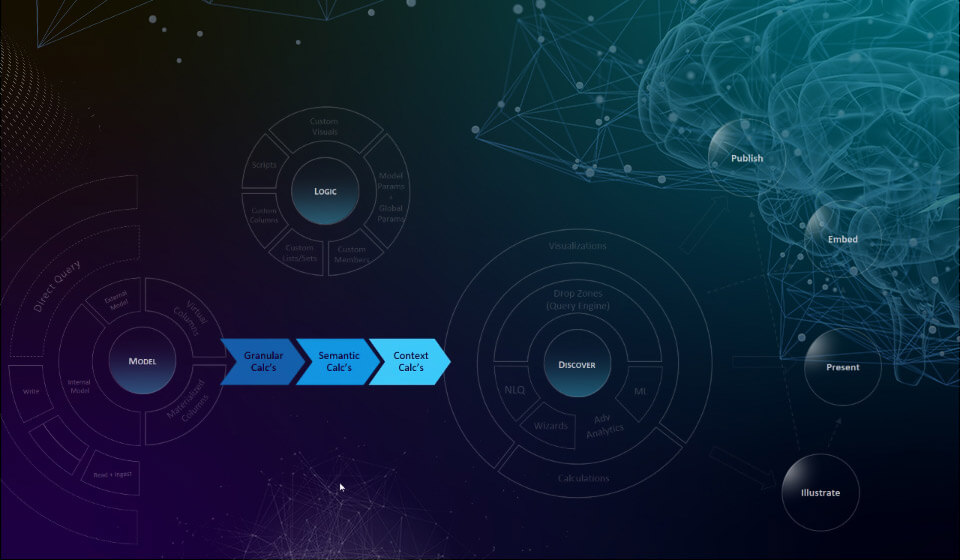In the most recent release of Pyramid 2018, Pyramid included a very sophisticated, multi-tiered calculation engine designed to solve the full spectrum of calculations. This comprehensive engine covers the three areas of calculation that are required to analyze your data successfully.
What are these three methods of calculation?
Granular Calculations.
Granular Calculations are the first method. It is the type of calculation that must be done at the row level and not at the aggregate. In the demo below, a custom calculation was created to calculate Sales. This is price multiplied by quantity. Making this calculation at any other point would “corrupt” the results of your analysis.
Semantic Calculations
The second calculation type is Semantic calculations. These are done at the aggregate level and are performed in the data model. An example of this is calculating margin. It should be calculated as total sales minus total expenses divided by total sales and not at the row level or the granular level.
Context Calculations
The third type of calculation method that Pyramid has is context calculation. They are calculations that are defined in the context of where they are included in. In this demo video, where figures were shown as a percentage of sales, regardless of the context, whether all companies were shown or some were removed, the total % of sales still added up to 100%.
Pyramid 2018.05
Using the Pyramid Query Language (“PQL”) as the mechanism, the calculation engine resolves all three.
Although it’s not entirely obvious why an analytic application would need all 3 types, very often, there is a strong need for each capability. What makes the Pyramid engine more powerful than most is that it can resolve all 3 classes of calculation needed in analytics in the same application in a consistent, integrated fashion and use it on any of the data stacks it operates with.
Surprisingly, few other platforms offer users all 3 capabilities. Some offer granular and semantic options. Others are just semantic calculations. Real-context calculations are offered by very few vendors. And it’s very rare to find an application that does all 3.
The following videos explain what the calculation types are with examples. The subsequent videos show how the context calculations can be used in different analytic problems.
To see more amazing feature view our latest features.
Other videos on calculations













